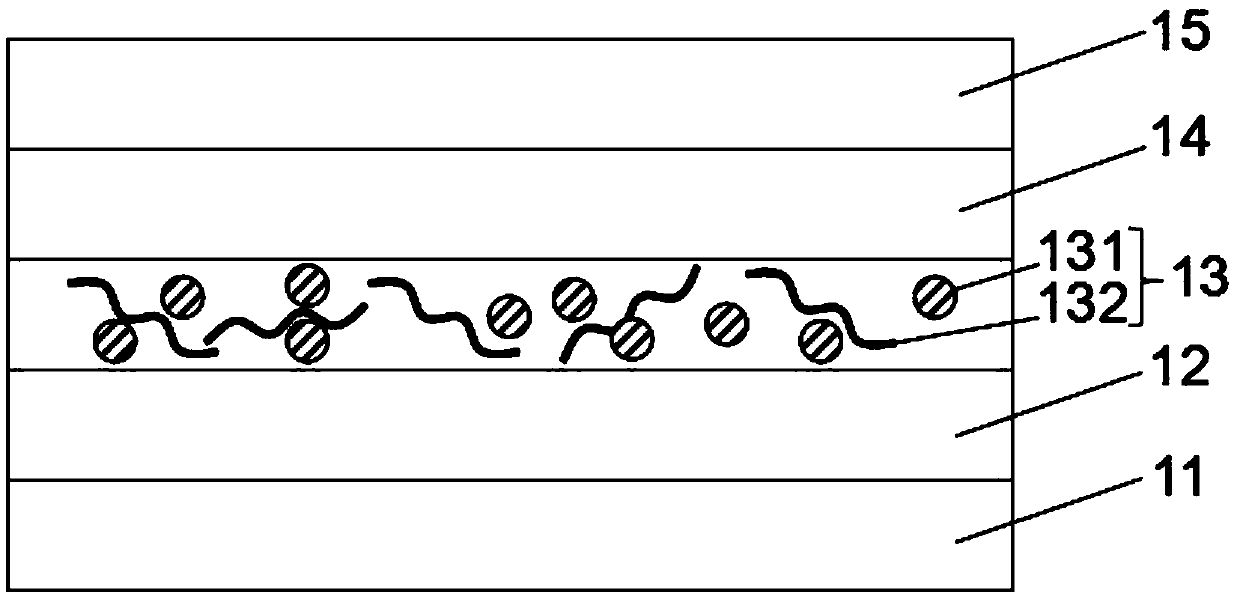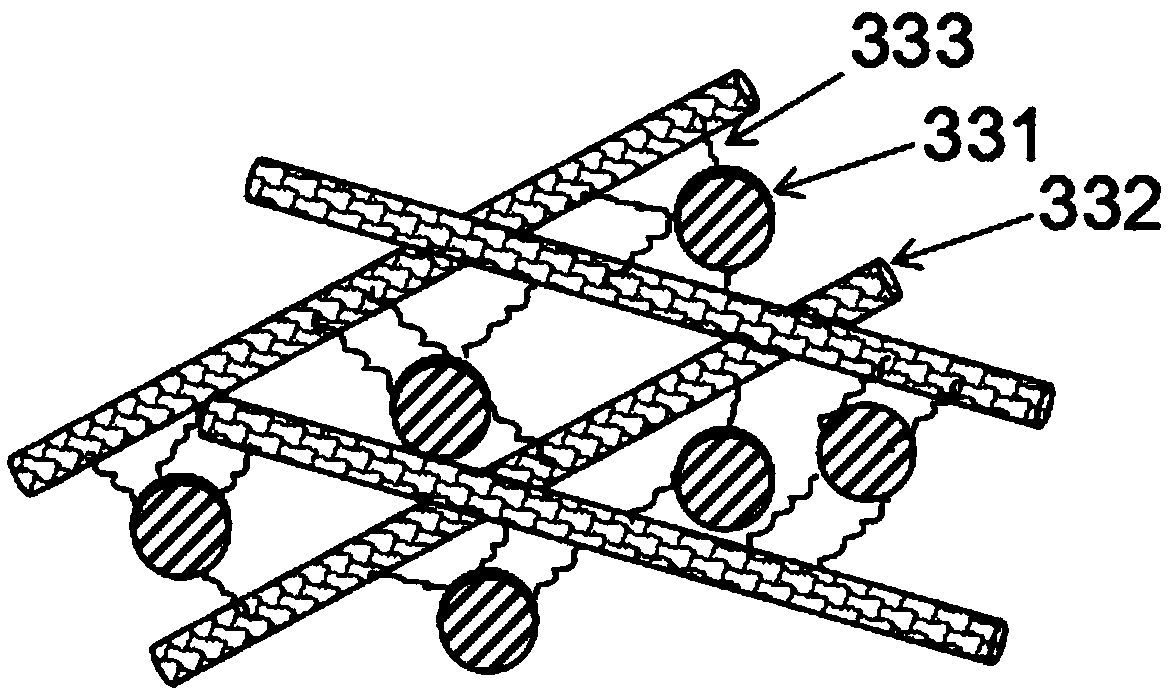Electroluminescent device, display device and lighting device
A technology of electroluminescent devices and light-emitting layers, which is applied in the direction of electric solid-state devices, electrical components, semiconductor devices, etc., can solve the problems of low luminous efficiency and short life, and achieve improved luminous efficiency, increased service life, and increased charge injection efficiency Effect
- Summary
- Abstract
- Description
- Claims
- Application Information
AI Technical Summary
Problems solved by technology
Method used
Image
Examples
Embodiment 1
[0052] It is the same as Comparative Example 1, except that the constituent material of the light-emitting layer includes carbon nanotubes with surface hydrophobic modification.
[0053]The constituent materials of the luminescent layer include surface hydrophobically modified carbon nanotubes, the surface of the hydrophobically modified carbon nanotubes is modified with octadecyl groups, the mass ratio of carbon nanotubes and quantum dots is 0.2%, and the carbon nanotubes are single-walled Carbon nanotubes have an outer diameter of 1 nanometer to 2 nanometers and a length of 0.5 micrometers to 2 micrometers.
[0054] The surface hydrophobic modification process of carbon nanotubes is as follows, get 20 milliliters of carboxylated carbon nanotubes in a 50 milliliter three-necked flask, fill 20 milliliters of thionyl chloride, 0.5 milliliters of N,N-dimethyl Formamide was refluxed at 70 degrees Celsius for 24 hours, and then 5 ml of oleylamine was added thereto, and reacted at ...
Embodiment 2
[0056] It is the same as Comparative Example 1, except that the constituent material of the light-emitting layer includes carbon nanotubes with surface hydrophobic modification.
[0057] The constituent material of the luminescent layer contains carbon nanotubes with surface hydrophobic modification, the surface of the hydrophobically modified carbon nanotubes is modified with hexadecyl, the mass ratio of carbon nanotubes and quantum dots is 0.2%, and the carbon nanotubes are single-walled Carbon nanotubes have an outer diameter of 1 nanometer to 2 nanometers and a length of 0.5 micrometers to 2 micrometers.
[0058] The surface hydrophobic modification process of carbon nanotubes is as follows, get 20 milliliters of carboxylated carbon nanotubes in a 50 milliliter three-necked flask, fill 20 milliliters of thionyl chloride, 0.5 milliliters of N,N-dimethyl Formamide was refluxed at 70 degrees Celsius for 24 hours, and 5 ml of hexadecylamine was added thereto, and reacted at 70...
Embodiment 3
[0060] Same as Example 1, except that the mass ratio of carbon nanotubes and quantum dots is 0.4%.
PUM
 Login to View More
Login to View More Abstract
Description
Claims
Application Information
 Login to View More
Login to View More - Generate Ideas
- Intellectual Property
- Life Sciences
- Materials
- Tech Scout
- Unparalleled Data Quality
- Higher Quality Content
- 60% Fewer Hallucinations
Browse by: Latest US Patents, China's latest patents, Technical Efficacy Thesaurus, Application Domain, Technology Topic, Popular Technical Reports.
© 2025 PatSnap. All rights reserved.Legal|Privacy policy|Modern Slavery Act Transparency Statement|Sitemap|About US| Contact US: help@patsnap.com



